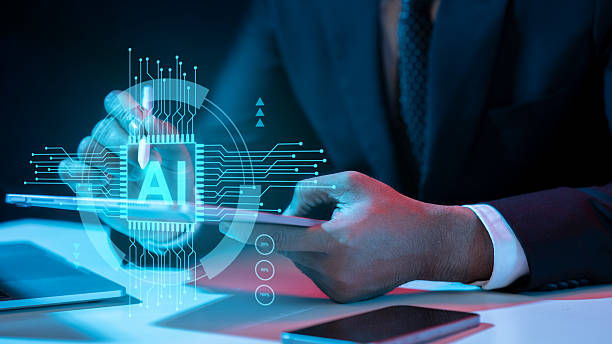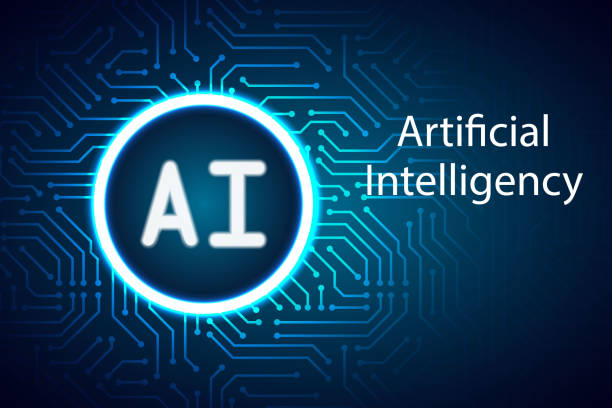What is an AI Robot? Comprehensive Definition and Key Applications

An AI robot is a combination of two fields, #robotics and #artificial_intelligence, aiming to create machines capable of performing complex tasks, learning from experiences, and making intelligent decisions.
These robots can be employed in various industries, including manufacturing, customer service, healthcare, and even education.
An AI robot is not merely an automated machine but an intelligent system that can interact with its environment and adjust its functions based on received data and information.
Key applications of AI robots include automating repetitive tasks, improving accuracy and efficiency, providing personalized services, and solving complex problems.
For instance, in production lines, intelligent robots can perform assembly tasks with high precision and greater speed, while in customer service, chatbot robots can answer customer questions and resolve their issues.
Thus, an AI robot acts as a powerful tool for increasing productivity and improving human quality of life.
Is your company’s website as professional and trustworthy as it should be? With specialized corporate website design by Rasawweb, create an online presence that reflects your credibility and attracts more customers.
✅ Create a powerful and professional image for your brand
✅ Convert visitors into real customers
⚡ Get free consultation now!
Main Components of an AI Robot: Hardware, Software, and Algorithms

An AI robot consists of three main components: hardware, software, and algorithms.
Hardware includes the physical parts of the robot such as sensors, motors, and processors, which enable interaction with the physical environment.
Sensors collect information from the environment, motors control the robot’s movement, and processors are responsible for data processing and command execution.
Software is the robot’s brain and includes programs and operating systems that control the robot’s behavior and performance.
These software usually are written in programming languages like Python and C++ and enable the implementation of artificial intelligence algorithms.
Algorithms are a set of instructions that the robot follows to perform specific tasks.
These algorithms can include machine learning algorithms, neural networks, and search algorithms that enable the robot to learn, make decisions, and solve problems.
Thus, the harmonious interaction between hardware, software, and algorithms enables the AI robot to perform complex tasks with high accuracy and efficiency.
More information about robotics
Types of AI Robots: Categorization Based on Applications and Capabilities

AI robots can be divided into different categories based on their applications and capabilities.
A common categorization is based on the type of tasks they perform.
For example, industrial robots are used for automating production lines and performing repetitive and heavy tasks.
Service robots are employed in various sectors such as healthcare, customer service, and education, performing tasks like patient care, answering customer inquiries, and providing personalized training.
Military robots are used in military and security operations, undertaking tasks such as threat detection, bomb disposal, and reconnaissance missions.
Another categorization is based on their artificial intelligence capabilities.
Machine learning-based robots can learn from data and improve their performance.
Neural network-based robots use complex structures for information processing and decision-making.
Natural language processing-based robots are capable of understanding and generating human language and can be used in chatbots and automated response systems.
More information about Artificial Intelligence
| Robot Type | Applications | Capabilities |
|---|---|---|
| Industrial Robots | Production line automation | Repetitive tasks, high precision |
| Service Robots | Healthcare, customer service | Patient care, answering questions |
| Military Robots | Military and security operations | Threat detection, bomb disposal |
Current Challenges and Limitations of AI Robots

Despite significant advancements in the field of AI robots, numerous challenges and limitations still prevent the wider adoption of this technology.
One of the main challenges is the complexity of designing and building intelligent robots.
Creating a robot that can effectively interact with its environment and perform complex tasks requires diverse expertise in robotics, artificial intelligence, and software engineering.
Another challenge is the high cost of developing and maintaining AI robots.
Advanced hardware, complex software, and skilled specialists all entail significant costs.
Furthermore, ethical and social issues are among the significant challenges.
The use of AI robots can lead to job displacement, increased social inequalities, and privacy concerns.
Cybersecurity issues are also of high importance, as AI robots can be targets of cyberattacks and used for malicious purposes.
More information about Artificial Intelligence on Wikipedia
Did you know that poor online store design can drive away up to 70% of your potential customers? Rasawweb transforms your sales with professional and user-friendly e-commerce website designs.
✅ Significant increase in sales and revenue
✅ Full optimization for search engines and mobile
⚡ [Get free consultation from Rasawweb]
The Future of AI Robots: Trends and Predictions
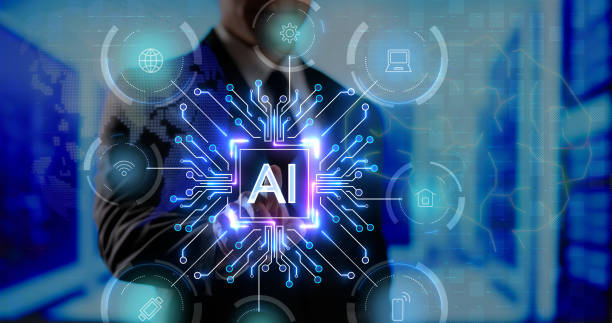
The future of AI robots is very bright and full of potential.
It is expected that in the coming years, we will witness significant advancements in this field, leading to broader and more complex applications of intelligent robots.
One important trend is the increased use of deep learning and neural networks in robots, enabling them to learn more complexly and make smarter decisions.
Another trend is the development of collaborative robots or Cobots, designed to work alongside humans, which can help improve productivity and reduce risks in various industries.
It is predicted that in the future, AI robots will play a significant role in solving global challenges such as climate change, health crises, and resource scarcity.
These robots can be employed in areas such as renewable energy, sustainable agriculture, and crisis management, helping to create a more sustainable and equitable world.
How to Choose and Use the Right AI Robot for Your Business

Choosing and using the right AI robot for your business requires careful consideration of needs, goals, and available resources.
First and foremost, you need to precisely determine which tasks you want to automate using an AI robot and what objectives you are pursuing.
Then, you should research different types of robots available in the market and compare their capabilities, limitations, and costs.
When choosing a robot, pay attention to factors such as accuracy, speed, reliability, and ease of use.
Also, ensure that the selected robot is compatible with existing infrastructures and has the ability to integrate with other systems.
After selecting the robot, you should have a detailed plan for implementation and staff training.
Training employees to operate and maintain the robot is of paramount importance and can help increase productivity and reduce costs.
The Impact of AI Robots on the Job Market: Opportunities and Challenges
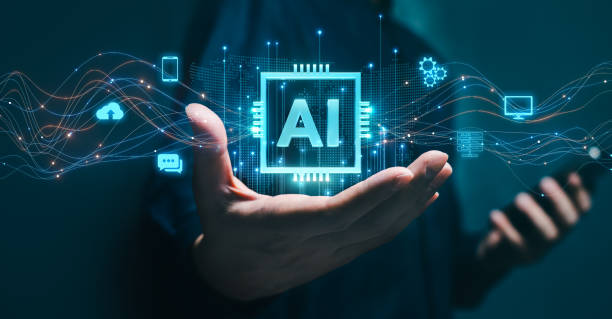
The impact of AI robots on the job market is a complex and multifaceted issue that brings both opportunities and challenges.
On the one hand, task automation by robots can lead to increased productivity, reduced costs, and improved quality of products and services.
This can lead to economic growth and the creation of new job opportunities in areas related to robot design, development, and maintenance.
On the other hand, automation can lead to the displacement of existing jobs, especially repetitive and low-skilled ones.
This can result in increased unemployment, social inequalities, and a need for extensive workforce training and retraining.
To address these challenges, governments and organizations must adopt policies that protect the workforce from the negative effects of automation and prepare them for future jobs.
These policies can include investing in education and retraining, creating social safety nets, and promoting entrepreneurship.
| Opportunities | Challenges |
|---|---|
| Increased productivity | Job displacement |
| Reduced costs | Increased unemployment |
| Creation of new job opportunities | Social inequalities |
Ethical Considerations in Designing and Using AI Robots
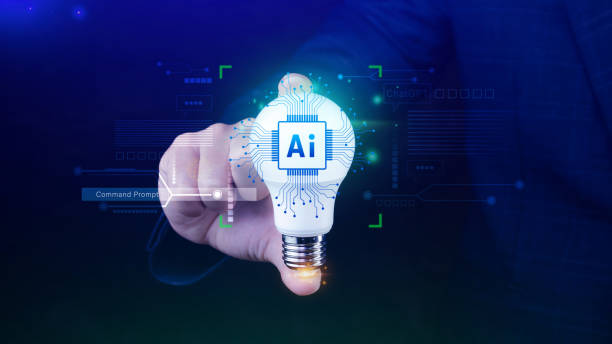
The design and use of AI robots come with several ethical considerations that must be carefully addressed.
One of the most important of these considerations is the issue of accountability.
If an AI robot makes a mistake or causes damage, who will be responsible: the designer, the manufacturer, or the user? This question requires clear legal and ethical answers.
Another consideration is the issue of privacy.
AI robots often collect a lot of information about their users.
How can this information be protected, and how can its misuse be prevented? The issue of discrimination is also of great importance.
AI algorithms can inadvertently be discriminatory and lead to decisions that disadvantage specific groups of people.
To prevent this, algorithms must be carefully designed and regularly reviewed and refined.
More information about AI ethics
Worried about losing customers because you don’t have a professional e-commerce website?
With e-commerce website design by Rasawweb, forget these worries!
✅ Significant increase in sales and visitor-to-customer conversion rate
✅ Professional and user-friendly design that builds customer trust
⚡ Get free consultation from Rasawweb
AI Robot Security: Protection Against Cyber Attacks
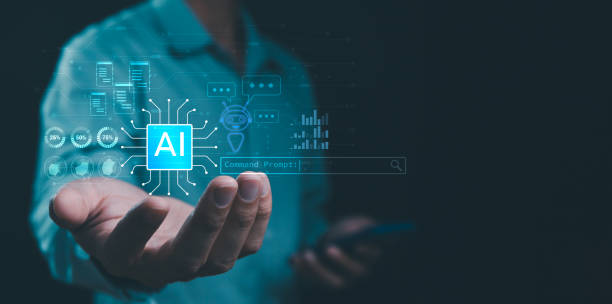
The security of AI robots is a critical issue that must be taken seriously.
AI robots can be targets of cyberattacks and used for malicious purposes.
Hackers can take control of the robot, steal its data, or use it to launch other attacks.
To protect AI robots from cyberattacks, several security measures must be taken.
These measures include using strong encryption, regularly updating software, and educating staff about security risks.
Additionally, intrusion detection systems should be installed in robots to quickly identify and neutralize attacks.
Collaboration between robot manufacturers, security researchers, and governments for information exchange and the development of security standards is of paramount importance.
Machine Learning and AI Robots: Training Robots for Complex Tasks
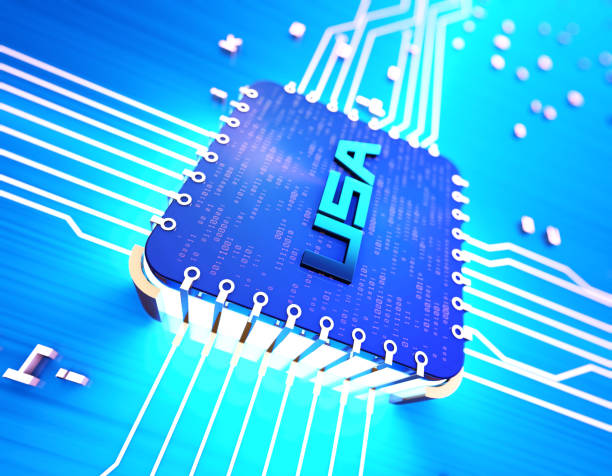
Machine learning plays a very important role in AI robots.
By using machine learning algorithms, robots can learn from data and improve their performance.
This enables them to perform complex tasks without explicit programming.
There are various methods for training robots, including supervised learning, unsupervised learning, and reinforcement learning.
In supervised learning, the robot is trained using labeled data.
In unsupervised learning, the robot discovers patterns and structures in unlabeled data.
In reinforcement learning, the robot learns by trial and error and receives rewards for correctly performing tasks.
The selection of the appropriate method for training the robot depends on the type of task and the available data.
With continuous advancements in machine learning, it is expected that future robots will be capable of performing much more complex and diverse tasks.
AI robots will revolutionize the near future.
Frequently Asked Questions
| Question | Answer |
|---|---|
| What is an AI robot? | An AI robot is a machine capable of understanding its environment, reasoning, learning, and making decisions to perform tasks autonomously. |
| What is the difference between ordinary robots and AI robots? | Ordinary robots perform repetitive tasks based on prior programming, whereas AI robots can learn from experience, interact dynamically with their environment, and even behave in a way that resembles human intelligence. |
| What are the main applications of AI robots? | They have applications in industries (manufacturing, assembly), medicine (surgery, diagnosis), services (customer support, domestic), exploration (space, underwater), and many other fields. |
| What technologies are used in building AI robots? | Machine Learning, Computer Vision, Natural Language Processing, Deep Learning, and Robotics are among the key technologies. |
| Can AI robots have emotions? | Currently, robots do not have emotions in the human sense. They can identify and react to emotions, but they do not experience emotions themselves. |
| What are the main challenges in developing AI robots? | Safety, reliability, ethics, autonomy, adaptability to complex environments, and natural human interaction are among the significant challenges. |
| How are AI robots trained? | They are typically trained using large volumes of data, machine learning algorithms, and deep learning to identify patterns and make decisions. |
| Examples of AI robots in daily life? | Smart robotic vacuum cleaners, customer support chatbots, self-driving cars, and surgical robots in hospitals. |
| Are AI robots a threat to human jobs? | Some repetitive jobs may be automated, but at the same time, robots can increase productivity and create new jobs in the development, maintenance, and supervision of these systems. |
| How is the future of AI robots predicted? | They are expected to become smarter, more autonomous, and capable of performing more complex tasks, engaging in closer interaction with humans in various environments. |
And other services of Rasa Web advertising agency in the field of advertising
- Smart Data Analysis: A professional solution for increasing sales by focusing on user experience customization.
- Smart Sales Automation: A professional solution for online growth with a focus on precise audience targeting.
- Smart Data Analysis: An innovative service for increasing website traffic through the use of real data.
- Smart Link Building: An innovative service for increasing user engagement through intelligent data analysis.
- Smart Brand Identity: Professional optimization for improving SEO rankings by using real data.
And over hundreds of other services in internet advertising, advertising consultation, and organizational solutions
Internet Advertising | Advertising Strategy | Advertorial
Sources
Comprehensive AI Guide – Digikala Mag
Applications of Artificial Intelligence in Daily Life
The Future of AI: Predictions and Challenges
Specialized Articles on AI Robots
? Do you want your business to shine in the digital world? Rasaweb Afarin Digital Marketing Agency helps you establish a powerful online presence by offering innovative solutions and targeted strategies. From SEO and search engine optimization to online ad management and user-friendly website design, we are committed to your growth and success. With Rasaweb Afarin, secure the future of your business in the digital space.
📍 Tehran, Mirdamad Street, next to Bank Markazi, Southern Kazeroon Alley, Ramin Alley, No. 6

